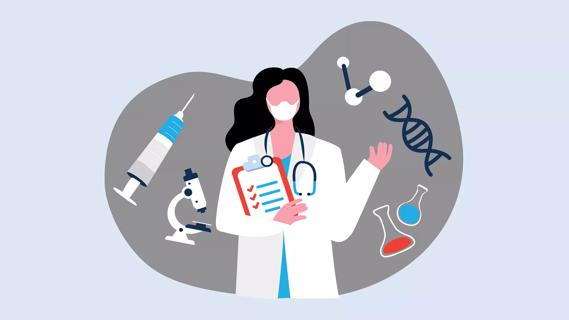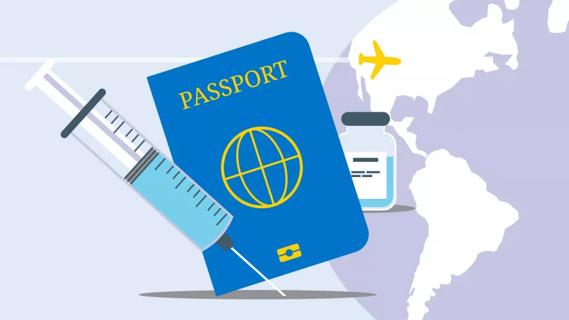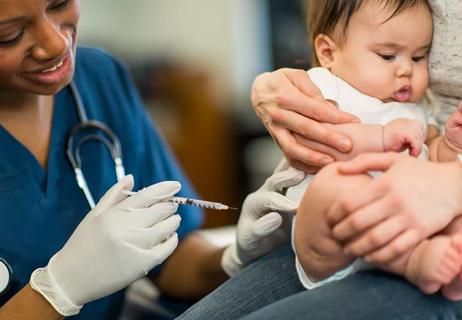Embarrassing or shaming often makes people defensive, which makes change more unlikely

Polio. Measles. Whooping cough. Mumps. It seems like every day we’re hearing about new outbreaks of preventable infectious diseases. As more and more people opt out of vaccinations, herd immunity diminishes. And in the case of viruses like COVID-19, that raises the specter of new and more dangerous variants emerging. It also increases the chances of diseases we’ve eradicated, like smallpox, coming back.
Cleveland Clinic is a non-profit academic medical center. Advertising on our site helps support our mission. We do not endorse non-Cleveland Clinic products or services. Policy
Some people can’t be vaccinated due to medical issues or religious beliefs, but most people who aren’t vaccinated don’t fall into either of those categories. They are either reluctant about or opposed to being vaccinated.
That choice puts all of us at risk, but it’s especially dangerous for those who can’t get vaccinated — they have to rely exclusively on herd immunity to keep them protected.
Vaccine hesitancy is a complex problem. So, how do we solve it? What can we say or do to help sway uncertain friends or family members? Behavioral health therapist Kathy Barringer, LPCC, and infectious disease expert Steven Mawhorter, MD, discuss how to approach this situation with understanding, kindness and respect.
There are two ends of the spectrum when it comes to addressing vaccine hesitancy.
On one side, you have those who are fearful, doubtful or have questions. Among all the different COVID-19 vaccines, annual flu vaccines, new vaccines coming out for other conditions like respiratory syncytial virus (RSV) and still other vaccines in various stages of development, there’s a lot of information out there. Maybe all of the changing guidelines around COVID-19 vaccination made them nervous, or perhaps they’re on the fence about receiving vaccines because of possible side effects.
On the other end of the spectrum are those who’ve already made up their minds and are dead set against receiving either a specific vaccine, or any vaccine at all.
Barringer says it’s best to focus your time and attention on those people in the middle of the spectrum. Those with a fixed mindset about the vaccine aren’t likely to be swayed, no matter how logical, factual or respectful you are. But people in the middle group tend to fall in the “wait and see” category, or simply need more information from a trusted source or individual.
These people in the middle territory are truly vaccine hesitant and might need more time, more information or more assurance.
“All hesitancy isn’t created equal,” says Barringer. “Some people are absolutely terrified of needles or side effects like vomiting. Others might be hesitating because they don’t have access to a nearby clinic. Some people might have doubts for political reasons.”
It’s important to remember that there are a variety of reasons for someone to be uncertain about vaccines. It’s normal and perfectly OK to have questions or concerns.
Discussions about vaccine hesitancy shouldn’t be about judgment, Barringer notes. It’s about meeting the person where they are and then reassuring, educating and ultimately helping them get vaccinated. Your goal of speaking to someone about the vaccine isn’t to debate or win an argument.
Many times, fear means there’s a lack of information. For example, if you find out that a friend or family member is fearful of the COVID-19 vaccine, try to get to the root of what’s causing that fear. Are they worried that it could have a long-term effect? Are they afraid because of how quickly the vaccines were developed? Are they uncertain because they don’t know what’s in them? Have they been misinformed?
These kinds of questions apply for all different kinds of vaccines, from established vaccines like measles, mumps and rubella (MMR) to brand new ones, like the one for respiratory syncytial virus (RSV), to older vaccines that are helping deal with new infections, as is the case with the smallpox vaccine and Mpox.
Knowing the source of someone’s fear can help you tailor your message and get them the information they need. But it’s important to remember to not be condescending about the person’s fear or concern. You may be fully vaccinated and well-informed, but that doesn’t mean everyone else has the same experience or even the same resources as you.
As you may already know, there are a lot of conspiracy theories and myths around vaccines. The person you’re speaking with may mention that they’re concerned about the jab changing their DNA, implanting a tracking chip or causing autism spectrum disorder. You already know that’s not true (because it isn’t), but it’s important that you respond to those kinds of concerns carefully. Your first instinct might be to roll your eyes, but that will likely make the person feel defensive.
“Making people feel ashamed or embarrassed only makes them less likely to change,” states Barringer. “Instead, reference trusted health experts or sources when discussing their fear and why something they’ve heard may or may not be true.”
Also, be careful not to push your own opinions or beliefs too strongly during the discussion, especially if it’s the first of several conversations. Ask the vaccine-hesitant person open-ended questions about why they feel the way they do and where they got their information from. For example, you could say “Tell me what you think about the [X] vaccine?” And “Why do you feel this way?”
When they answer, really listen to what they’re saying before you respond. When you do, mention your reasons for getting vaccinated and why you chose to. Everyone’s vaccine story is personal.
One of the best things you can do when addressing vaccine hesitancy is to share your own experience with friends and family. But before you do, it’s important to know your audience and what you should or shouldn’t share.
“If I’m talking to someone who’s really afraid of vaccine side effects, I’m not going to go into great detail about how crummy I felt after my flu shot,” explains Barringer. “I’m not going to lie to the person, but I’m not going to scare them in the opposite direction either.”
Instead, you could mention that side effects mean that the vaccine is triggering an immune system response in your body — it legitimately means it’s working. Or if you know that the person you’re speaking with is afraid of needles, you could mention that you were also nervous about the jab, but it wasn’t nearly as bad as you had anticipated.
Dr. Mawhorter adds that giving the person something positive to do can give them a stronger sense of personal control over the whole process. For example, taking acetaminophen (Tylenol®) two or three times a day (as prescribed) for two or three days after getting a vaccine can take the edge off some of those symptoms.
Knowing your audience and what about vaccinations the person is afraid of or concerned about is crucial for determining what you say to them — or even how you explain something.
Here’s an example explanation: The vaccine acts like a quiz and the disease is the final exam. In this case, taking the quiz (the vaccine) means you don’t have to take the final exam.
If the person is very political, it’s best to steer clear of any mention of politics and instead try to focus on vaccines as a major health issue and a concern for our health systems. If the conversation starts to turn emotional or aggressive, diffuse the tension by either walking away or mention that you can pick up the discussion at another time.
On the flip side of knowing your audience, you also need to know yourself. If you aren’t getting through to someone and the situation is getting intense or awkward, turn your attention inward to your own behavior and what you can control. There are plenty of things you can do to help prevent the spread of disease:
Dr. Mawhorter likes to explain why the vaccines are an important tool for improving public health by using an analogy about driving a car:
Hand washing, wearing a face mask and maintaining distance from others is like defensive driving. Vaccines work like a seatbelt: They are very effective but need to be worn in order to work. Medication acts like the airbag, but it only helps you after ‘impact,’ meaning after the illness occurs. The illness is like a person who runs the red light as you’re moving through the intersection. If you get hit, you have all three safety tools working together to avoid the most damage.
He likes this analogy because it reinforces the value of getting diagnostic testing as soon as possible after symptoms appear, especially for individuals who are unvaccinated. Treatment of influenza (with oseltamivir/Tamiflu®) or COVID-19 (with Paxlovid or Remdesivir) can reduce viral shedding — that means reducing the chances you’ll pass your illness along to someone else.
Misinformation, the COVID-19 pandemic, caution fatigue, access issues and a general lack of knowledge about how vaccines are made and how they work has created a perfect storm for vaccine hesitancy.
When people who can be vaccinated aren’t, it impacts herd immunity and puts us all at greater risk. That’s why it’s crucial that we continue to get as many people vaccinated as possible.
“You can’t tell that a person has a weak immune system by looking them,” Dr. Mawhorter reminds us. “Healthy people choosing to be vaccinated is a sincere form of kindness to our neighbors with immune system challenges.”
Learn more about our editorial process.

The answer varies from person to person and vaccine to vaccine

Plan early — getting the right vaccines can help you stay healthy on your travels

Getting routine vaccinations together can save you time and may be more effective

Adults 60 or older, pregnant people and babies can get protected against the respiratory virus

Protecting yourself and others from a virus that causes cancer is the central focus

Babies should get the RSV immunization before their first cold and flu season

They can stop an infection before it gets you sick or prevent you from becoming seriously sick

Vaccination is a good idea before or after treatment

Your metabolism may torch 1,300 to 2,000 calories daily with no activity

A gentle touch in all the right places may help drain your sinuses